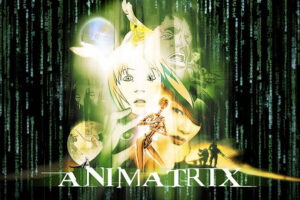
Walt Disney’s 1940 animated film Fantasia was groundbreaking in more ways than one. The third Disney animated feature film, Fantasia departed from traditional narrative storytelling. Instead, it experimental combined colorful animation set to classical music compositions. Walt Disney and conductor Leopold Stokowski joined forces to create a unique “concert feature” film that blended artforms.
Fantasia consists of eight animated segments set to pieces of orchestral classical music. Disney wanted to elevate the art of animation and create something that appealed to mass audiences as well as critics.
The film’s segments vary dramatically in tone, ranging from the abstract to the humorous to the darkly dramatic. Though initial box office results were underwhelming, Fantasia went on to become a highly influential classic.
The film culminates with one of its most memorable and impactful sequences. The final two segments present an epic contrast between night and day, chaos and calm, darkness and light. The foreboding ‘Night on Bald Mountain’ leads into the gently uplifting ‘Ave Maria.’
This powerful closing scene leaves viewers contemplating the themes of light versus dark.
‘Night on Bald Mountain’
‘Night on Bald Mountain’ is a fantastically frightful sequence set on a dark, eerie mountain. We watch as Chernabog, a massive winged demon, summons spirits and ghosts on Walpurgis Night.
Skeletal shadows dance in twisted forms as Chernabog directs the chaos. The demonic imagery and dramatic music by Modest Mussorgsky create an unsettling, nightmarish mood.

Darkness and Light
But the darkness doesn’t last. As daylight breaks, the spirits retreat and we transition into the ‘Ave Maria’ segment. Bathed in rays of sunlight, we now see a much more peaceful setting – a forest with a procession of monks and nuns. As Franz Schubert’s serene vocals play, the figures walk solemnly through the woods carrying candles. The tumult of ‘Night on Bald Mountain’ fades away.
The juxtaposition of these two sequences seems to emphasize the dichotomy of good and evil, darkness and light. The ‘Night on Bald Mountain’ sequence represents the sinister forces that emerge at night, but daylight ultimately returns to banish the darkness. The ‘Ave Maria’ segment shows that good will prevail when the sun rises again. The lighting shifts from shadowy night to luminous daybreak as the music transitions from ominous to uplifting.

Overall, this finale leaves us with a message of hope. There may be fearful shadows, but the light shall always return. As Fantasia comes to a close, we are reminded that even in the darkest moments, goodness and beauty persist if we look for them. The haunting ‘Night on Bald Mountain’ makes Ave Maria’s peace and optimism even more powerful. This iconic pairing of sequences creates a meaningful, memorable capstone for Disney’s masterpiece.










Leave a Reply